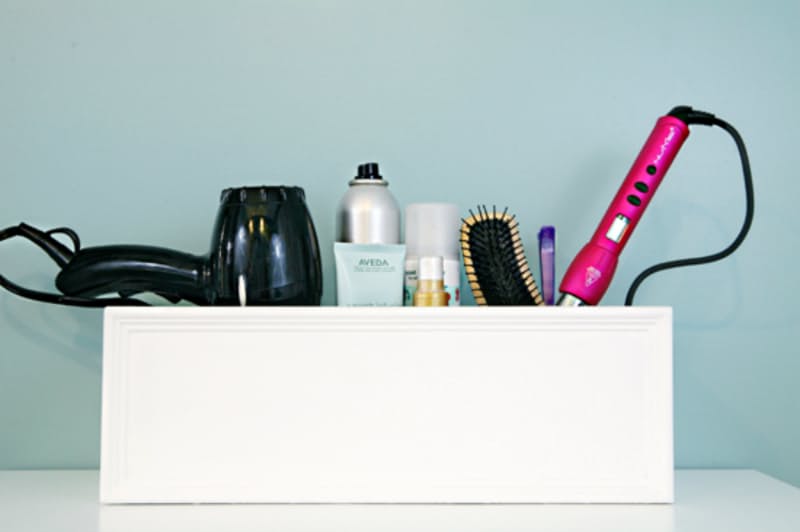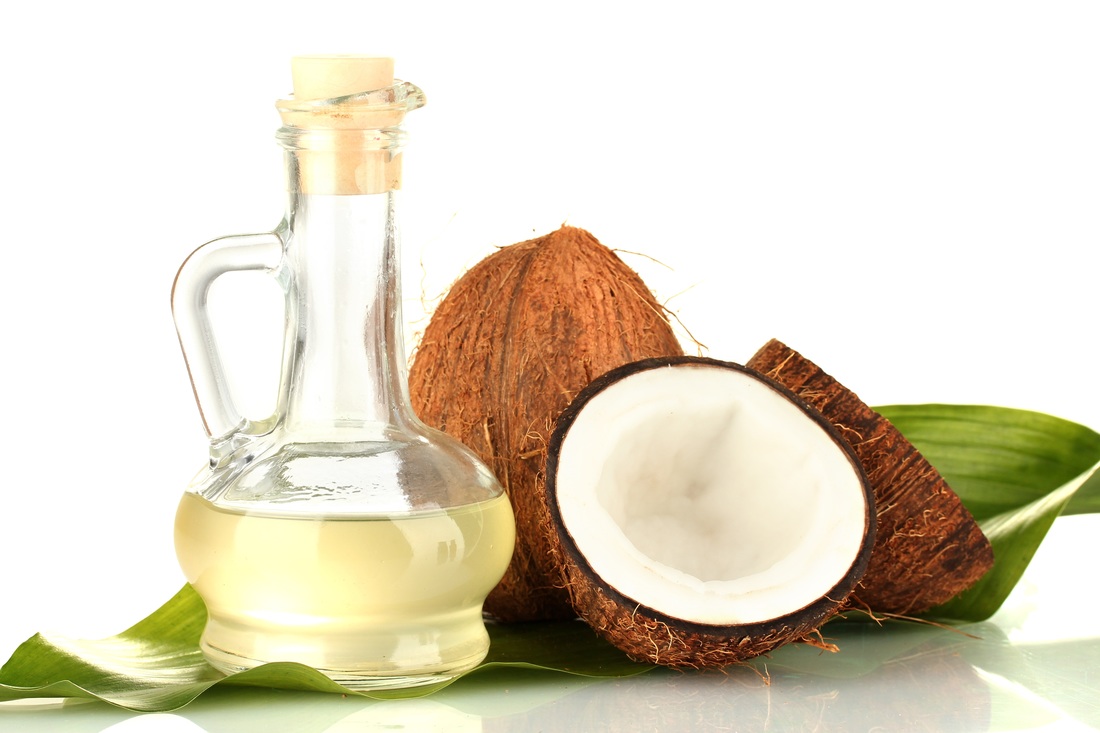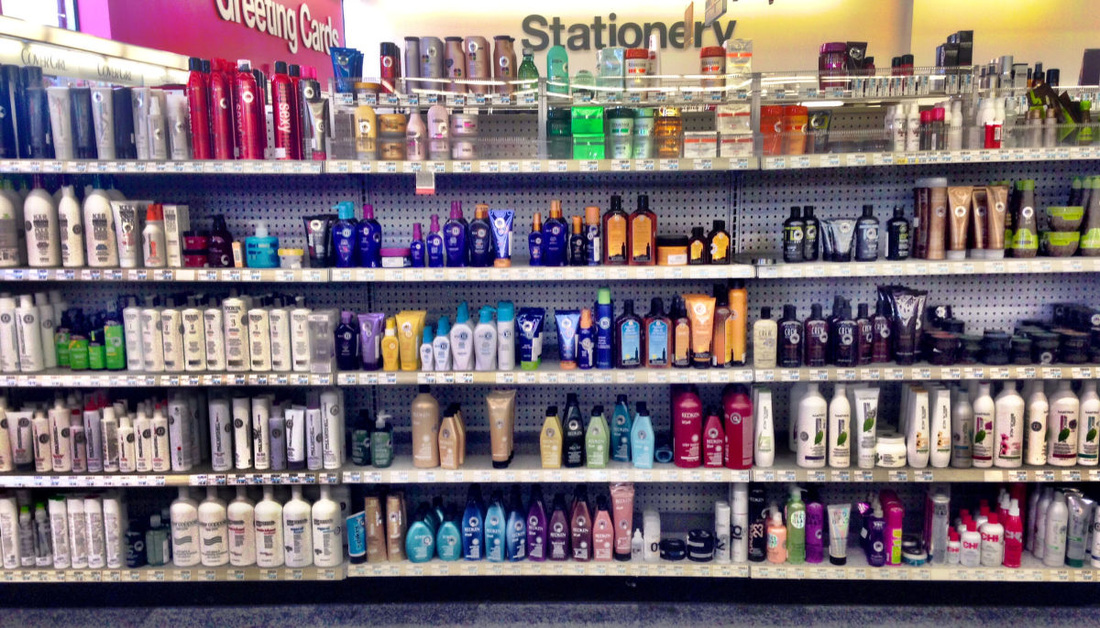|
11/29/2016 THE MOST EFFECTIVE WAY TO GROW LONG HAIRTHE STIGMA OF MEN WITH LONG HAIR BEING FEMININE IS LONG GONE Written by Rakelle Maurici
Over the past few years men have become increasingly encouraged by barbers and grooming experts to embrace their locks and grow their hair. The stigma of men with long hair being feminine is long gone. Contrary to popular belief, it’s known that a lot of women will agree that longer hair on men increases their sex appeal. So, whether you’re after a surfer look, a man bun or a lob (that’s a long bob to you and I) here’s how you can go about growing it out effectively. Is Long Hair for You? One of the first aspects you need to think about is whether the look will suit you. Just because long hair is becoming a popular hairstyle for men doesn’t mean it will work for every Tom, Dick and Harry out there. This can be for several reasons - ask yourself, does it suit your lifestyle? Can you imagine yourself wearing this look to the office? Could you tie it back for a corporate look? Next, consider your hair type - the smoother the hair the more manageable it will be, especially if it has a slight wave through it. If your hair is coarse or curly, let it fall as it pleases and try not to play around with it too much because the key to long hair is low maintenance; it should look and feel casual. Hair Care To be able to grow your hair and keep it healthy at the same time you shouldn’t over wash it. Shampoo damages the follicles while stripping hair of its natural oils which enable it to grow. Secondly, don’t brush the hair when it’s wet, this over stretches the hair, which will make it weaker. When it comes to hair products ensure that every time you wash your hair you are using conditioner to keep it healthy and nourished. Avoid products with high alcohol content because it will dry your hair out. If you’re prone to thinning, then you’ll need to buy a shampoo, which will stimulate the hair and unclog the follicles. Give yourself regular scalp massages to get the hair stimulated at the root. Lastly, you’ll need to persevere because when growing hair out you’ll inevitably go through the dreaded awkward phase. The sides and back grow much quicker so you’ll need to go for regular trims to maintain proportion and tidy up any dead ends. This will stop your hair from looking scruffy and keep it looking healthy. After the first trim, let the hair grow and trim as little or as much is required. However, since you're trying to grow your hair, you'll have to trim less than your hair grows. Let's say you have a half an inch a month growth rate, then cutting half an inch every 3 to 4 months may be logical. Follow our advice and you’ll be sporting a longer hair in no time. (source) You wouldn't trade your favorite curling iron for anything, and yet, you probably don't even have a designated storage space for it. Keeping your heat styling tools clean and organized is important for more than just aesthetic reasons—having a safe place to store them will help them last longer, since easy organization means no more destroyed cords and damaging falls from the countertop.
To keep your favorite hair styling tools safe and your bathroom looking chic, click on the photo below and try one of these DIY storage solutions: 11/26/2016 0 Comments Coconut Oil Hair TreatmentThe Best Natural Organic Hair Treatment
Coconut oil is, hands down, one of the most effective hair treatments for a very wide variety of hair issues. Many claim that coconut oil actually works better than any man-made treatments on the market, and because it's 100% natural it's free of silicone, alcohols, and other chemicals that can aggravate sensitive skin and hair. It works incredibly well for repairing damaged hair that has been over-processed, heat damaged, or is just naturally dry. Coconut oil is also anti-fungal in nature, making it a perfect natural anti-dandruff treatment, or as a preventative treatment for dandruff. It's a great regular hair treatment for maintaining very healthy hair and scalp when used as a part of your regular hair care routine (1-4 times per month). There are a variety of coconut oils available on the market today. I recommend using an organic cold-pressed coconut oil for hair care. Why Coconut Oil Works Better Coconut oil can be found at a variety of drug stores, grocery stores, organic food stores, or health stores. Coconut oil works well to recondition dry and damaged hair because the molecular structure of coconut oil, unlike other oils or moisturizers that just sit on the hair, is ideal for penetrating the hair shaft, getting past the cuticle, repairing and preventing damage from the inside out. Lauric acid, capric acid, and vitamin E (all present in coconut oil) help restructure hair, increase hair's strength by preventing protein loss, and vastly improve shine. People that regularly use a coconut oil treatment report increased body, shine, and manageability with less breakage, static, tangles, and split ends. Many also claim that hair sheds less and feels thicker after regular use. How to Use Coconut Oil as a Deep Conditioning Treatment For a deep conditioning treatment, massage a couple of tablespoons of the coconut oil into your clean, damp hair and scalp (if your hair is thinner or gets greasy easily, you may choose to skip the scalp as the oil could weigh your hair down). You may need more for long hair. Use more oil where your hair is the driest and most damaged (typically on the ends) and less where your hair is healthiest (mid-shaft and scalp area). I find that it's best to section your hair off and apply the coconut oil in manageable sections to be sure that every hair is coated properly. If your coconut oil is in a solid state, you will need to warm the oil gently to create a liquid. Allow the oil to sit on your hair for 20-30 minutes after application. People with very dry or porous hair may choose to leave it on longer and some people like to use it as an overnight treatment. To increase the effectiveness of the treatment, cover with a shower cap and wrap your hair in a hot towel (fresh from the dryer) or apply heat with a hair dryer for a few minutes. Because the oil is very heavy, you will need to shampoo the oil out of your hair well after the treatment. Coconut oil can be a god-send to those with severely damaged, over processed, and heat styled hair. It will be important to experiment with the amount of coconut oil to use, and how long to allow the oil to penetrate your hair in a way that will work for your specific hair type. If the coconut oil leaves your hair feeling weighed down or greasy, try using less or shampooing more effectively post treatment. How to Use Coconut Oil as a Daily Hair Moisturizer / Detangler You can use a very small amount of coconut oil on the ends of your hair after showering as a detangler and as a daily moisturizer for very dry hair. It works wonders on dry skin issues as well. How to Use Coconut Oil as a Dandruff Treatment To treat dandruff, massage a small amount of coconut oil into your scalp and allow it to sit for at least 10 minutes and up to overnight (you'll want to wear a shower cap to bed or wrap your head/pillow in a towel). Shampoo out. To remove excess dandruff skin from your scalp, use this epson salt treatment. (source) Is it Really Better than the Stuff You Buy at the Store? By Kendra Aarhus - Women's Hairstyles Expert
Since the beginning of shampoos, the battle between professional shampoo and store shampoo has been clear. In one corner you have your beloved hairstylist, touting the pros to her fancy $30 bottles of premium shampoo. In the other corner you have your best friend with great hair, who pays $1.99 for a gallon of shampoo at the local Wal-Mart. What's really the difference? Is salon shampoo really worth the price? After all, we're talking about soap here, right? I'll be perfectly honest with you. I haven't used a store-bought shampoo in years. It doesn't mean I wouldn't if I needed to or if my budget required it. It does seem like a pretty easy place to save a few dollars in a pinch. I prefer professional shampoo, but at the end of the day we are comparing soap to soap. What's the real difference? It was once explained to me like this. Wine is made of grapes. All wine is made of grapes and with similar processes, some wine is worth $3.99 a bottle, others are worth hundreds of dollars per bottle. A professional wine steward can tell subtle differences in many aspects of any bottle of wine when compared to another. A professional hairdresser feels the same way about shampoo. The bottom line is that there really is very little tangible difference in salon shampoos and store shampoos. They are all meant to wash the hair and scalp. They are all made of similar ingredients. Both professional and non-professional companies are forever formulating better, safer shampoos everyday. At the end of the day, they are all soap. Alas, it is not the end of the day, just yet. Keep reading. If that's the case why on earth would you spend $30 on a bottle of shampoo at your salon when you can get a similar bottle for $1.99 at Wal-Mart? For the same reasons that you might purchase a $30 bottle of wine from a local vineyard, when you can get a bottle of wine for four bucks at Wal-Mart. Well, maybe not the same reasons, but I've broken down the vast differences below. The Difference in Shampoo Performance The first thing a consumer wants to know is, "does it work?" I remember my pre-hairstylist days of cheap shampoo in my own shower. Buying shampoo at the salon was a huge luxury for me, and I rarely could justify the cost. I felt like I hit the good hair day jackpot when staying with friends or relatives and they had "the good stuff" in their showers. Are you nodding your head? In almost all regards, I think salon quality shampoo works better. The ingredients tend to be more gentle with less fillers, sulfates, and build-up creating wax. I like the way my hair responds to professional shampoo, and I dread the day I travel and forget my shampoo forcing me to use the off brand hotel stuff. The Difference in Shampoo Quality When defending the price of professional shampoos, a stylist will almost always tell you that salon shampoo is more concentrated. You use less, therefore it lasts longer and the cost difference isn't really as great. This is true. While you'll often find the same ingredients in salon shampoos and store shampoos you won't find that the concentrations of these ingredients are the same. Of course, you can't tell that from the bottle. Store bought shampoos have more water, sulfates, and fillers with less vitamins, oils, and minerals that are designed to keep your hair healthy. The Difference in Where Your Money Goes I think the biggest difference in salon formula vs. store formula shampoos have more to do with where your money goes than anything else. When you buy a bottle of shampoo from the drug store, your money goes to the store and the company that makes the shampoo. The shampoo company uses your money to develop more shampoo, market their shampoo, and turn a profit. When you buy a shampoo from a salon your money goes to the salon owner and the shampoo company that made the shampoo. Your salon owner uses her money to make a living to support herself and her family, invest in her salon, and ultimately to invest in herself. Even when you buy shampoo from a chain salon, the stylist that educated you and sold the shampoo to you typically earns a commission off of the sale of your shampoo. The shampoo company that made your shampoo uses it's money to develop more shampoo, market their shampoo, and turn a profit just like the non-professional shampoo brands, but it goes even further. They put money back into the salon industry via education, which is absolutely huge for every salon professional. Hair product companies do a lot for large scale salons and small booth renters a like. The hair industry thrives and evolves because of the focus that these companies have on the individuals that sell their product. When someone makes a decision to purchase their shampoo from me, I really feel honored that they trust my influence and recommendation. Plus, like most salons, I offer a money-back or equal exchange guarantee on my products. I stand behind my recommendations and will help you find a great shampoo without buying several different bottles to get the right formula. Your local drug store can't say that. Likewise, my wine analogy still applies. When you're buying a great wine from a family owned vineyard that takes great pride in recommending a wine that will be a perfect compliment to your grandmother's treasured recipe, it's worth more. It's appreciated more. Even if the ingredients are pretty similar to something you could have picked up at the drug store on the way to Grandma's house. By Lauren LeVine
There’s no hair enemy as fierce and unyielding as the much-dreaded split end. “Split ends occur when the protective outer layer of the hair cuticle wears away because of external stressors such as heat styling and salon chemical services,” explains Amy Abramite, creative director and stylist at Chicago’s Maxine Salon. “Once the internal structure of the hair is exposed, it becomes weakened, dehydrated and damaged, causing split ends.” Although the only true way to rid yourself of roughed ends is to have them snipped off, our friends at StyleList found several things you can do between salon appointments to improve the look of damage and prevent more splits from occurring. Use a wide-tooth comb. After you apply conditioner in the shower, slowly run a wide-tooth comb through hair until all the tangles are out. This prevents the snaps and breakage you can incur when you try to brush out hair that is roughed up from a towel-dry, advises Jessie James, stylist at New York’s Marie Robinson salon. Mind your heat tools. That bargain-bin blow-dryer may be a tempting purchase, but inexpensive tools tend to dangerously overheat over time and burn ends into splits, warns James. Instead, use a top-rated economical brand or invest in a professional-grade dryer. Go gentle. “Imagine wearing a silk blouse every single day. It would get pretty beat up. Treat your hair like an expensive fabric, and it will last longer and look better,” says Natasha Sunshine, owner of Santa Monica’s Byu-Ti salon. Use only covered elastics with no metal piece, like those made by Goody to tie hair into a ponytail. Take folic acid and biotin. There’s a reason they say you are what you eat: Nutrients literally build the proteins that make up your hair strands. Two B vitamins in particular—folic acid and biotin—have been shown to supplement hair health, length, and thickness, says Sunshine. Folic acid helps the production of red blood cells, which powers the growth of hair. Foods rich in folic acid include green leafy veggies, oranges, soybeans, and wheat. Biotin strengthens both hair and nails through its metabolism of fats, carbs, and proteins. Brown rice, lentils, peas, sunflower seeds, walnuts, and soybeans are all rich in biotin. Use leave-in conditioner. Conditioners that you rinse out in the shower will do little to nothing for split ends, but a leave-in conditioner will add extra protection that stays on strands as you heat-style and go about your day. Blow-dry the right way. Always use a nozzle on your dryer to control and direct the flow of air, and dry hair in a downward direction before sectioning off and drying completely with a round brush. This way, you spend far less time with intense heat straight on the hair. “If possible, air drying 90 percent before picking up the blow-dryer is even better,” says Sunshine. And of course, if you can naturally dry all the way, that’s always your best option. Limit damaging services. There’s unfortunately no way around it—treatments like hair color, highlights, straightening, and perms all cause trauma that can result in a bevy of split ends, says Abramite. Try to limit service to just one major hair concern and refrain from washing strands for at least 48 hours afterward, when they’re most porous and likely to break and split. Not only will hair health improve after you go on a chemical-service diet, but your wallet will thank you. Get regular cuts. Although a haircut is the only way to get rid of split ends, regular trims are your best protection against them. The longer you wait to trim, the greater the chance you have of split ends worsening and traveling up the shaft. It may sound counter-intuitive, but this is why it’s actually best to get frequent trims if you’re trying to grow longer, healthier hair. Whatever your hair type or style, our experts recommend you get a cut or trim at least every six to eight weeks. (source) |
Hair by BrianMy name is Brian and I help people confidently take on the world. CategoriesAll Advice Announcement Awards Balayage Barbering Beach Waves Beauty News Book Now Brazilian Treatment Clients Cool Facts COVID 19 Health COVID 19 Update Curlies EGift Card Films Follically Challenged Gossip Grooming Hair Care Haircolor Haircut Hair Facts Hair History Hair Loss Hair Styling Hair Tips Hair Tools Health Health And Safety Healthy Hair Highlights Holidays Humor Mens Hair Men's Long Hair Newsletter Ombre Policies Procedures Press Release Previous Blog Privacy Policy Product Knowledge Product Reviews Promotions Read Your Labels Recommendations Reviews Scalp Health Science Services Smoothing Treatments Social Media Summer Hair Tips Textured Hair Thinning Hair Travel Tips Trending Wellness Womens Hair Archives
June 2025
|
|
Hey...
Your Mom Called! Book today! |
Sunday: 11am-5pm
Monday: 11am-6pm Tuesday: 10am - 6pm Wednesday: 10am - 6pm Thursday: By Appointment Friday: By Appointment Saturday: By Appointment |






 RSS Feed
RSS Feed